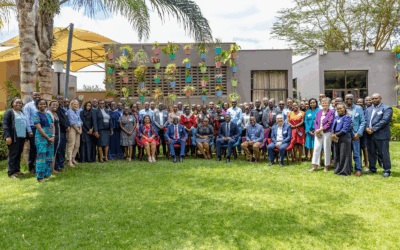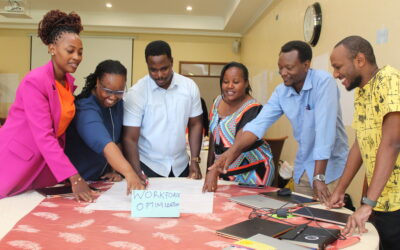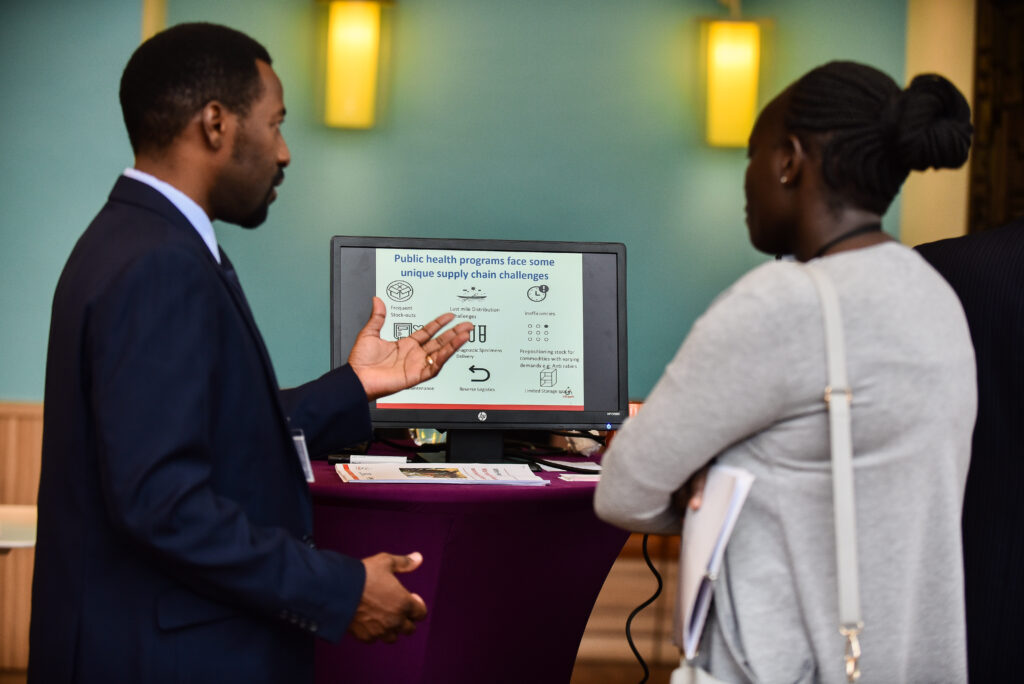
In a rapidly evolving professional landscape, the importance of multigenerational learning has never been more evident. Spanning Baby Boomers (1946–1964), Gen X (1965–1980), Millennials-Gen Y (1981–1996), and Gen Z (1997–2012), the modern workforce brings a wide range of experiences, preferences, and learning needs that need to be considered when designing learning experiences. Understanding the multi-generational differences is essential to creating an effective, inclusive, and engaging learning environment.
Personalizing Learning for Multigenerational Engagement
The “one-size-fits-all” learning strategies do not apply in today’s and future workforce. Today’s workforce demands personalized learning experiences tailored to their unique preferences that speak to their roles and responsibilities at the different levels of the health system. For example:
- Gen Z learners, raised in a tech-savvy environment, might thrive in self-directed and interactive digital learning formats.
- Older generations, such as Baby Boomers and Gen X, often value structured, traditional approaches to training.
By blending digital innovation with traditional methods, organizations can create learning programs that cater to all generations. For instance, microlearning—short, focused lessons—works well across generational lines by offering digestible, bite-sized content for learners while accommodating the busy schedules of the health workforce.
Leveraging Technology Without Leaving Anyone Behind
Technology is a tool for bridging generational gaps, but its implementation requires careful consideration. The assumption that all learners adopt new tools equally is not necessarily the case. We should
- Use technology to enhance, not replace, the learning experience.
- Offer training on digital platforms to ensure all generations feel confident using them.
- Integrate user-friendly interfaces that appeal to a broad audience.
The Health Facilities Supply Chain Management micromodules cater to a diverse multigenerational group of learners by offering interactive content like videos and bite-sized content that caters more to Gen Z and detailed case studies, real-life examples, and discussion forums that cater to older learners.
inSupply’s analysis of the first cohort of the Health Facilities Supply Chain Management micromodules course highlights the need for a blended approach to digital learning. For example, while younger generations may be more comfortable navigating online platforms, older generations may benefit from additional support to fully engage with the micro modules, as shown in Graph 1: Age distribution of enrolled learners.
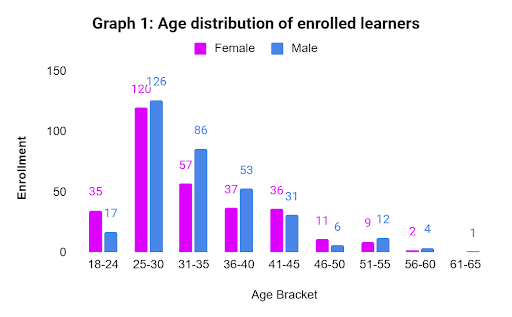
Multigenerational Mentorship: A Two-Way Street
Mentorship models are evolving to embrace the multigenerational nature of today’s workforce. Reverse mentoring, where younger employees mentor older colleagues on topics like technology, fosters a dynamic exchange of ideas. This approach ensures that knowledge transfer flows both ways, creating a collaborative culture that values the expertise of all generations.
The micromodules analysis shows a strong representation of pharmacists and pharmacy technologists across experience levels, with most enrollees in the 0–3 years group (Graph 2). This highlights a key opportunity for mentorship programs to bridge generational gaps. By pairing experienced professionals with younger workers, organizations can create a balanced ecosystem of learning and growth.
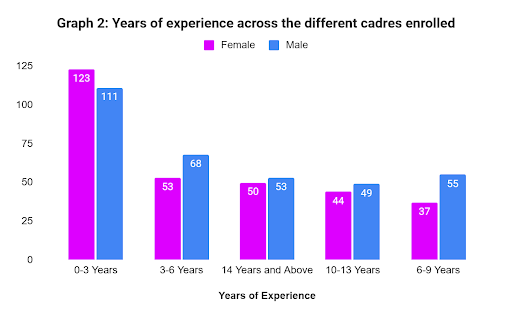

Addressing Gender Dynamics in Learning Environments
Gender plays a significant role in shaping learning experiences across different age groups. Insights from the micromodules analysis reveal the following multigenerational trends:
- Among enrollees, there is an almost equal gender distribution, with females and males participating in similar numbers across various age groups.
- Female participants, particularly in the 25–30 years age group, tend to exhibit higher completion rates in certain modules, indicating that engagement strategies may need to consider different motivators for females, such as incentives or gamification.
- Males dominate the 3–6 and 6–9 years of experience categories, while females are more represented among employees with 0–3 years of experience, suggesting that newer employees (often younger) may need different support structures to boost engagement and completion.
To address these dynamics, organizations can develop gender-specific engagement strategies that cater to the unique motivations, learning preferences, and barriers experienced by participants across different age and experience levels. Tailoring content and support to both gender and age group preferences can help improve engagement and completion across all generations. This includes designing content that reflects diversity, challenges stereotypes, and creates spaces for women or men to discuss challenges and leadership skills without societal biases.
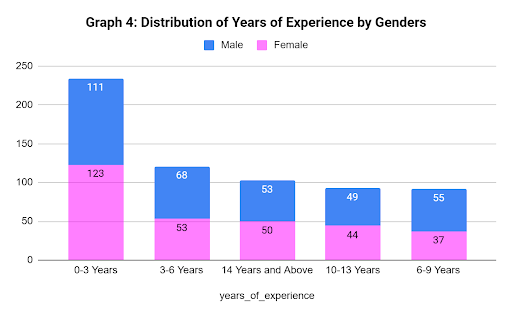
Insights from the Micromodules Micromodules Analysis
The Micromodule Analysis Report offers valuable data-driven insights into multigenerational and gender-specific learning trends:
The analysis of the micromodules reveals key demographic trends related to gender and age, which can inform strategies to improve participant engagement and completion rates.
The gender distribution of enrollees is nearly balanced, with 307 females and 336 males out of 643 total participants. However, the age distribution shows that the largest group of participants is in the 25–30 years age range (Millennials), which is primarily male, while the 61–65 years age group (Gen X) has the least representation, with only one male participant. Females are more active in the 18–24 years age range (Gen Z), whereas males dominate the 31–35 years age group (Gen Y). Additionally, there is low engagement from both males and females in the 56–60 and 61–64 (Gen X) age groups.
Regarding module completion, the 25–30 age group, predominantly female, exhibits higher completion rates. exhibits higher completion rates. For example, in the micromodule Understanding the Client’s Needs module, females in the 25–30 years group completed more than males, but in the 31–35 years group, male participants had a higher rate of completion. However, overall completion rates remain low across all age groups, with the highest being just 23% for the Understanding the Client’s Needs module. The age group 45-50 years is predominantly female, and the age group 51-55 years is predominantly male.
The findings suggest that targeted strategies for different age groups could improve engagement and completion. For males, particularly in the 51–55 age group, tailored content and engagement methods, for example, networking and peer learning opportunities, may help boost participation. For females, especially in the 25–30 age group, incentives and gamification could further enhance motivation and completion rates. Additionally, targeted outreach to address the low engagement in the 18–24 and 56–60 age groups could improve participation. Tailored content and delivery methods suited to both age and gender preferences could help drive better engagement across all demographics. These insights can inform improvements in module content, delivery, and overall user engagement strategies.
Building the Future of Learning
As organizations adapt to the demands of a diverse workforce, designing inclusive, flexible, and personalized learning programs is vital. By incorporating multigenerational insights and addressing gender-specific needs, we can:
- Foster a culture of continuous learning.
- Empower the workforce to thrive in a rapidly changing world.
- Enhance engagement and completion rates across learning modules.
The key lies in leveraging technology, mentorship, and data-driven strategies to create learning experiences that resonate with us. The analysis of the inSupply’s Micromodules performance is a valuable reminder of the importance of understanding our learners’ unique needs and preferences. By doing so, we can build a workforce that’s not only skilled but also adaptable and future-ready.

